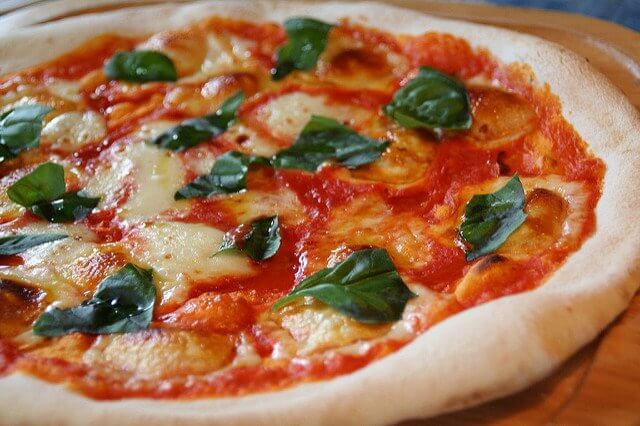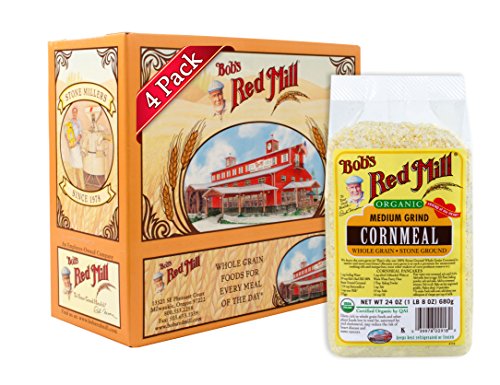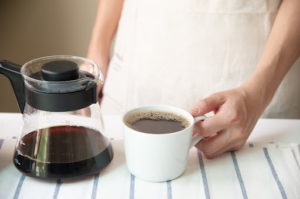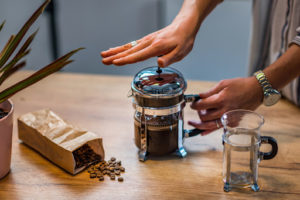
“There’s nothing new under the sun.” This sage wisdom applies to just about everything, and that includes pizza. In 500 BC, Persian soldiers were baking flatbread on their shields in the field, topped with cheese and dates. There’s evidence tracing pizza back to everyone from the ancient Egyptians to the Greeks, depending on your definition.
The ancient Greek flatbread was called plakous, which was a focaccia-like bread. It was typically topped with herbs, oil, garlic, and onions. It’s thought this focaccia bread came to them from the ancient Etruscans, the predecessors of the Romans.
The modern pizza was born in Naples, where galette flatbread was topped with the ingredient that we all associate with pizza: tomatoes. This innovation was made possible by European contact with the Americas, where the tomato originated.
No-yeast pizza dough
Pizza truly has an amazing and international history. Wherever it came from, this tasty concoction of bread, oil, herbs, and veggies has become a staple food. However, on a busy day, who has time to wait for yeasted dough to rise?
Enter the non-yeast pizza dough!
With a non-yeast dough, you’re not just being efficient, you’re going back to basics. This type of pizza crust is similar to an Italian bread called piadina. Piadina is covered in toppings, folded, and eaten.
As Virgil once wrote, “We devour the plates on which we fed.”
Ingredients
To make a yeast-free pizza, you need your pizza pan (or any flat baking sheet, like a rimmed baking pan), a rolling pin (optional), and some basic ingredients you can usually find in the pantry: flour, salt, baking powder, oil, and milk.
See the Bamber Wooden Pizza Roller
To make cleanup easy, use parchment paper to line your pan.
Ingredients:
- 2 cups all-purpose flour
- 2 teaspoons baking powder
- 1 teaspoon salt
- ⅔ cup milk (or a non-dairy substitute)
- ⅓ cup olive oil
Making the pizza dough
Preheat the oven to 450 F. Combine the dry ingredients in a mixing bowl. Make a hollow and add the wet ingredients, and mix well. The dough should be slightly soft and flexible. If your dough is dry, add a bit more milk, a little at a time until the dough can be worked easily.
Check out this article for my recommendation on the best mixing bowls for baking!
After you’ve mixed the ingredients, dust your hands and the dough with flour. Lift the dough out of the bowl and dust the bottom. Return the dough and knead about 10 times, just enough to give your dough that elasticity that allows it to stretch.
See Bob’s Red Mill Unbleached White All-Purpose Baking Flour
Let the dough rest for 10-20 minutes.
Dust your rolling pin (or your hands) with flour. Roll or pat the dough out to about a quarter inch thickness. You can manipulate the thickness according to your tastes, just as you would with yeast dough pizza crust.
Fit the dough onto your prepared pan.
Tip: To give your pizza a little pizzaz, dust the prepared pan with a bit of cornmeal.
See Bob’s Red Mill Organic Cornmeal, Medium Grind
It’s not necessary to pierce the dough because, without the yeast, there should be no bubbling. However, that little bit of piercing can serve another purpose. Pierce the dough a few times and brush or spritz it with olive oil. The oil will crisp up the dough a little, and seep into the holes.
If you use aluminum baking sheets, you need this guide on how to clean them.
Baking the crust
Bake the crust for about 5 to 8 minutes on high heat, then turn the heat down to 425o F. Remove the crust from the oven and top it with all those wonderful ingredients that you love.
Replace the crust in the oven for about 10 to 15 minutes, until the top is bubbly and browned.
Get that pizza warmed up right! See this article for my recommendations on home pizza ovens, and even learn how to build your own.
Toppings
Top your crust with pizza sauce or a drizzle of olive oil.
See Ellora Farms Certified Single Estate Extra Virgin Olive Oil
For the cheese, Mozzarella and Parmesan are the clear favorites. Of course, there’s nothing wrong with branching out occasionally. Sharp cheddar makes an interesting choice, and a mix of sharp cheddar and parm is always appealing. Check out this post for recommendations on the best cheese graters for hard cheeses like Parmesan.
Feeling ambitious? How about a pizza topped with fresh, homemade pesto?
Popular pizza styles

“Pizza Margherita”: This style is often attributed to Neapolitan pizzamaker Raffaele Esposito. He supposedly developed it in honor of the Queen consort of Italy, Margherita of Savoy. The pizza uses ingredients that match the colors of the Italian flag: tomatoes, fresh basil, and mozzarella.
No-pizza sauce: We love our pizza sauce in America, but try topping the pizza crust with sliced fresh tomatoes, sliced onions, fresh basil, a sprinkle of minced garlic, olives, green peppers, mushrooms, and some sliced Italian sausage.
Like mushrooms on your pizza? Find out how to dehydrate this versatile ingredient.
Mexican: Top with salsa, jalapenos, chorizo sausage, green peppers, onions, and garlic for a feast inspired by our friends South of the Border!
Go veggie: Use any (or all) of the above vegetables, along with some we haven’t mentioned. You can use spinach, kale, or chard for leafy green vegetables. Now to add some color! You can’t go wrong with sliced yellow, green, and red peppers.
Classic pepperoni: We took a look at the highest quality, tastiest pepperoni brands. Curled or flat? Greasy versus non-greasy? The results are in.
Check out the Pizzacraft PC0232 Folding Bamboo Pizza Peel for Grill
No time? No need to order out!
That it takes less than a half hour from start to finish gives this ancient flatbread a modern appeal. Try the yeast-free variety of crust on a busy night! It’s easy, quick, and the ingredients are probably already in your kitchen cabinet. You’ll have delicious, healthy pizza in the same amount of time it takes a delivery guy to show up at your door.
Check out my guide to whipping up your next pizza using a pizza stone pan?
For more pizza-related goodness, check out this post on which pizza stones are best for your kamado grill! You might also enjoy this article about pizza peelers perfect for using with the Big Green Egg. And if you’re feeling like exploring more Italian cuisine, see what I found out about the best commercial panini presses.
Now that you’ve made your own pizza… make your own tortillas too! Here are the best rolling pins.
And, to learn how to make pizza in a cast iron skillet, head on over here!
Image credit via Flickr Creative Commons: George G. and Yoshihide N.










Bryce is not a real professor, but he's real nerdy in the kitchen. He's been barbecuing, chopping, and generally blazing food for many decades. He thinks there's definitely a better spatula or utensil out there that hasn't been invented yet.